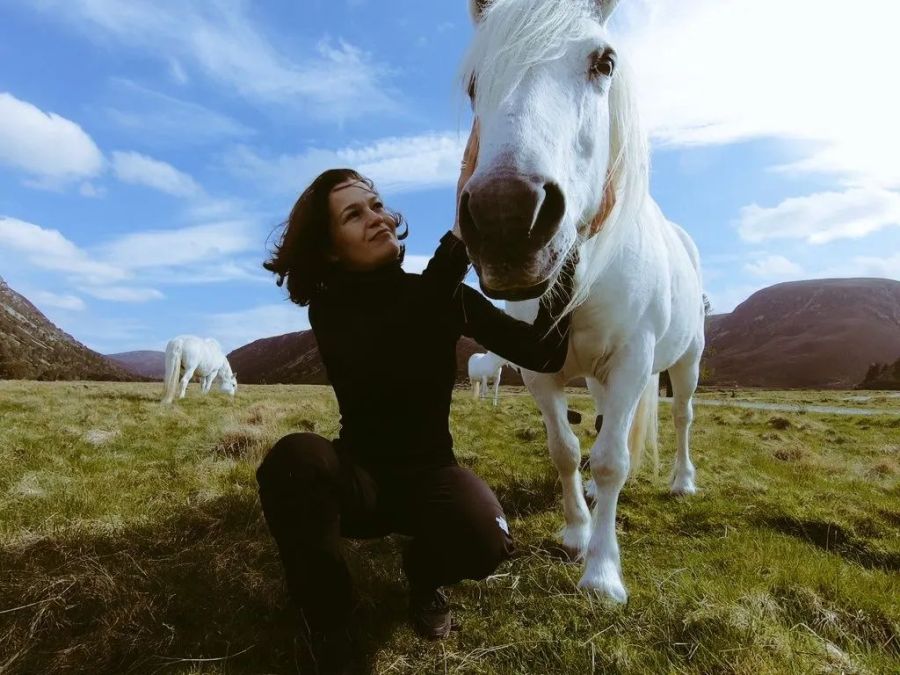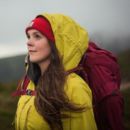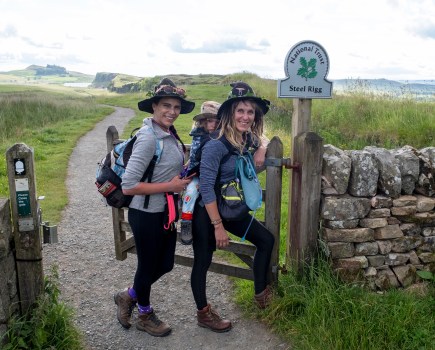Find your winter flow on feet or wheels through the art of movement outdoors with Ana Norrie-Toch, bikepacking guide and Movement Director.
From the age of three, Ana Norrie-Toch danced ballet and jazz. They are styles which instilled in her a “hyper-awareness” of her body in an environment which kept Ana “disconnected” from herself. The constant presence of the mirror and the aesthetic expectation of dance was a far cry from her memories outdoors of “bounding about in the waves on the east coast” where she grew up. At 11, she experienced “smiles, sun and fearlessness” along the Aonach Eagach ridge with her brother, dad, and family friends. “I think the exposure to that landscape stayed in me, dormant, until I returned years later.”
Main image: Ana and friend in Highland places | Credit: Ana Norrie-Toch
After a period of time in Amsterdam, return to Scotland Ana did. Thanks to one adventurous friend and the Cycle to Work scheme, Ana, who previously hadn’t owned a bike or cycled more than a few miles, set off to bikepack the Outer Hebrides. The trip would change her life, allowing Ana to realise the difference between physical performance and the simplicity of physical effort.
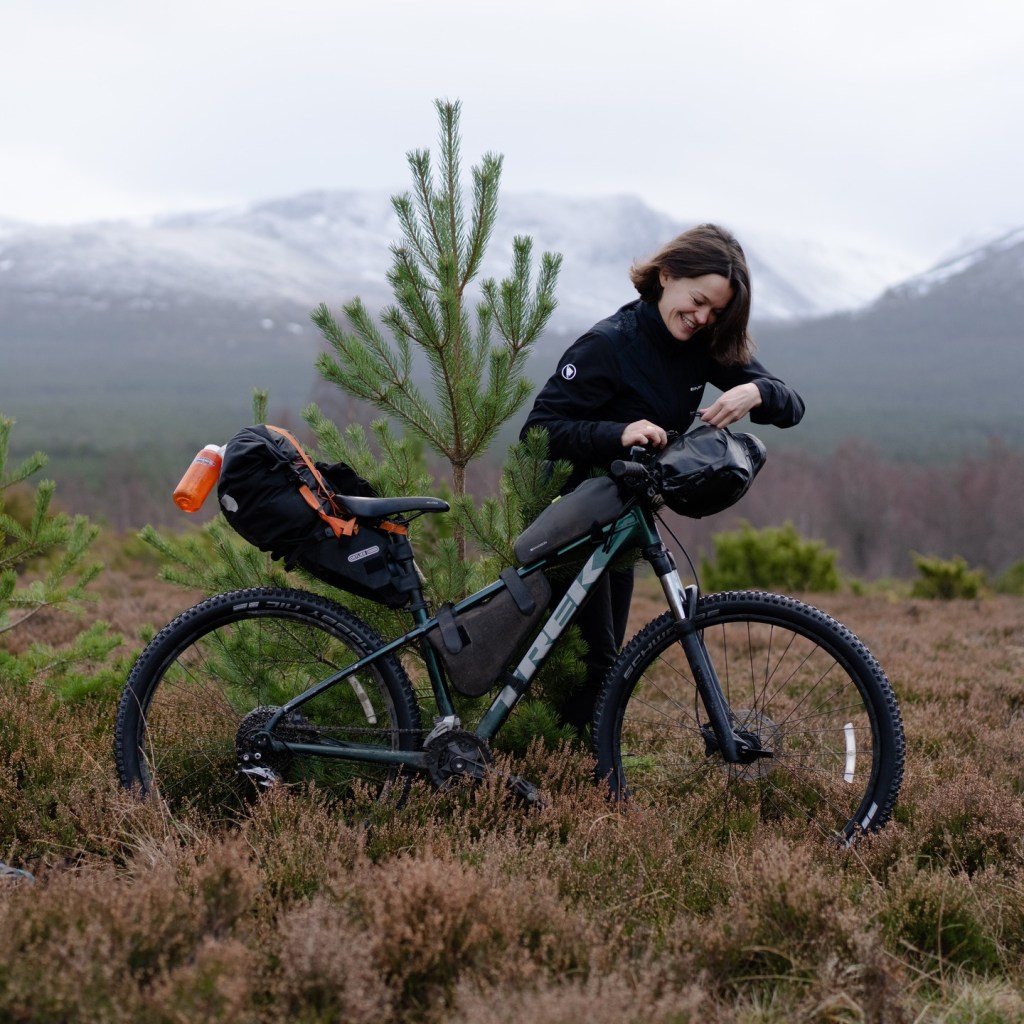
Happy bikepacking in the Cairngorms. Credit: Rupert Shanks
Now 33, living in Edinburgh and working on theatre, musical theatre, and contemporary performance collaborations as a Movement Director, guiding actors through the subtle but universal movement of body language, Ana is still called to the outdoors. Her work also allows her to explore the “movements and dance-like rhythms of communities across Scotland’s Highlands and Islands” on site-specific projects and as a bikepacking guide.
We spoke to Ana about her winter camping rituals, the movement artistry and heritage of peat cutting on the Scottish islands, encounters with wild ponies and her unwavering belief that there is no limit to how you can uniquely connect to outdoor spaces.
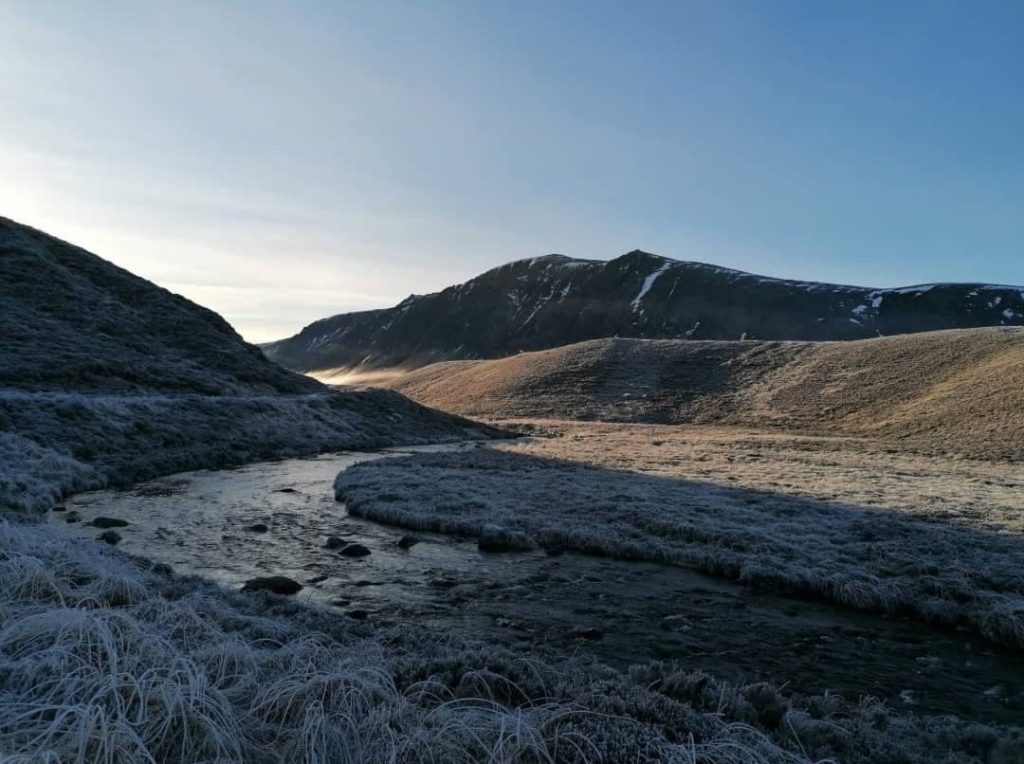
A winter wonderland in the Cairngorms. Credit: Ana Norrie-Toch
TGO: Could you recall a formative adventure experience which led you to fall in love with being outdoors?
Ana: I fell in love with the outdoors when I truly returned to my body on my first bikepacking trip cycling the Outer Hebrides. I didn’t own a bike and hadn’t cycled more than a few miles before – but the photos of the islands and the enthusiasm of my friend Jenny got me there! One Cycle to Work scheme application later, I had a bike and I was off!
The freedom I found on that cycle changed my life. It made me realise the difference in physical performance (that had been in my body for a long time through dance) and physical effort. This was not a performance for anyone, it didn’t matter what I looked like. The pure freedom I found in moving forward, pedal after pedal, was so empowering. This self-supported adventure was the catalyst for me finding myself again after a long time of disconnect.
Since then, I haven’t stopped bikepacking, building confidence with friends over longer and longer distances. In the past few years I have frequently headed out solo in the Highlands and Islands. The people I meet in these spaces of landscape, bothies and cafes, keep that fire burning to explore and experience these positive, perspective-shifting journeys.
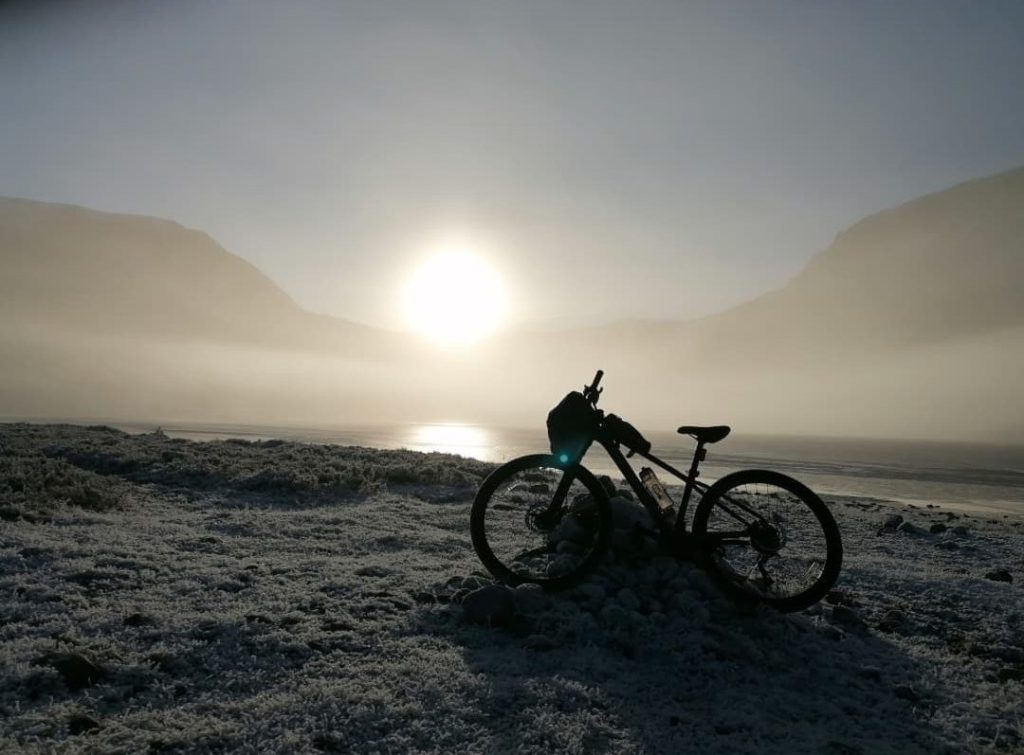
A good place to park the bike. Credit: Ana Norrie-Toch
TGO: What keeps you enthralled by Scotland’s mountains?
Ana: I grew up in Scotland, and I remember bounding about in the sand and waves on the east coast from a young age, encouraged by close family friends in particular. There was a big day along the Aonach Eagach ridge with my brother when I was 11, along with our friend Stewart, who expertly guided us. In hindsight I can laugh now, but my dad did not find it so funny once we made it to the Clachaig Inn those years ago. We were in safe hands, but looking back I don’t think we knew the scale of adventure ahead that day. I just remember the smiles, sun and fearlessness at that age. I think the exposure to that landscape stayed in me, kind of dormant for a while, until I returned years later.
After graduating, I moved to Amsterdam and was surrounded by bikes. At that point the bike was a mode of transport for me. I think this is maybe where the bike as a concept started to shift in my mind. I moved back to Scotland without realising the bike would have such a huge impact to come.
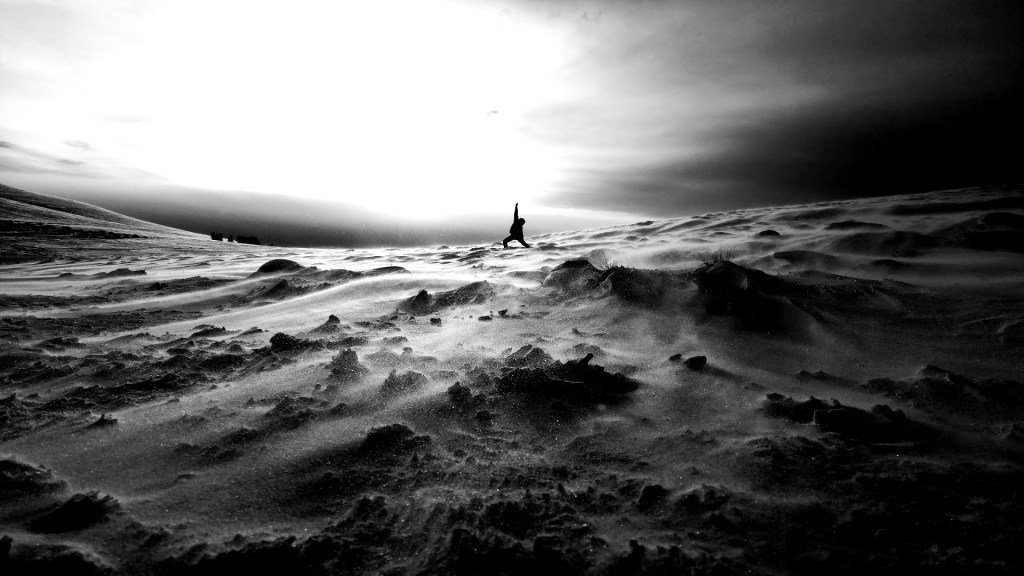
Moving through winter. Credit: Ana Norrie-Toch
TGO: When did you become aware of how your body moves, and moreover, one’s capacity to move in a way that grounds you in your body while helping you process and connect with the surroundings?
Ana: From the age of three, I had my eyes focused on how I moved through ballet and jazz which created a hyper awareness of my body. In all honesty, this environment kept me in a disconnect from myself for a long time, and instead of a place for physical freedom and outlet, the constant of the mirror and a physical aesthetic was the opposite – particularly when I had other turbulent factors at play in life. This continued into my professional training. I was kind of just going through the motions of performance. This being said, I am grateful for how this shaped me and my perspective of seeing through movement now.
Bikepacking shifted how I felt about my body and how I move, for me. It helped me untangle a lot of self doubt and find strength in my body which ultimately came from the freeing of my mind. Journeying through, and also being still within the landscape is where I am my true self, personally and creatively.
On one of my first solo journeys on my bike, from Stirling to Glencoe in a day, is when things clicked. I was pretty knackered from a big day on the bike – but when I came around the corner and saw the Buachaille Etive Mòr I felt a new energy. All of the momentum from that day – and the time to ease into that state of flow urged me to get off the bike. I walked across the moor beneath this mountain and began to move. For the first time in years, I was moving for me – the way I felt I wanted to move. It was slow, non technical – not a performance. I was present – truly there. I had no thoughts going through my mind at all. Such peace. I get emotional even thinking about it now. This day changed everything! Here I found my truth in movement and myself.
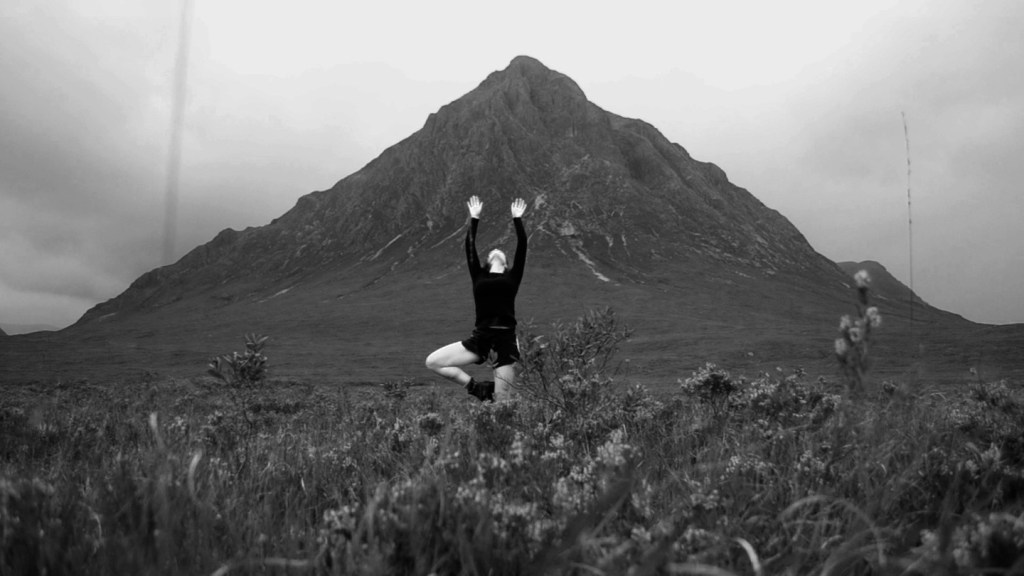
Where it all began. Credit Ana Norie Toch
TGO: For any newcomers, can you describe the work of a movement director and movement artist and how you came to the practice?
Ana: Towards the end of my training I decided I wanted to work with actors within my creative work. I felt so energised by the collaborative and conversational way of working with actors – the human body language and more universally relatable movements of their bodies. As a Movement Director, I am exploring the character with the actor through movement, be that gesture, posture, or stylised movement, to facilitate what they express that is unspoken. The subtlety of body language is how we read each other. It’s universal which is why I feel movement is so powerful.
My journeys and exposure to landscape have been hugely influential in my collaborative movement work, particularly with Director Izzy Gray’s Keepers of The Light, in which landscape and seascape impact the characters so deeply. It was a dream to be a part of as Movement Director. My work has been a mix of theatre, musical theatre, contemporary performance and site specific work and I love to work collaboratively – with ownership of the movement coming from who is moving – not choreographed or based on how I move. However subtle, movement is everywhere!
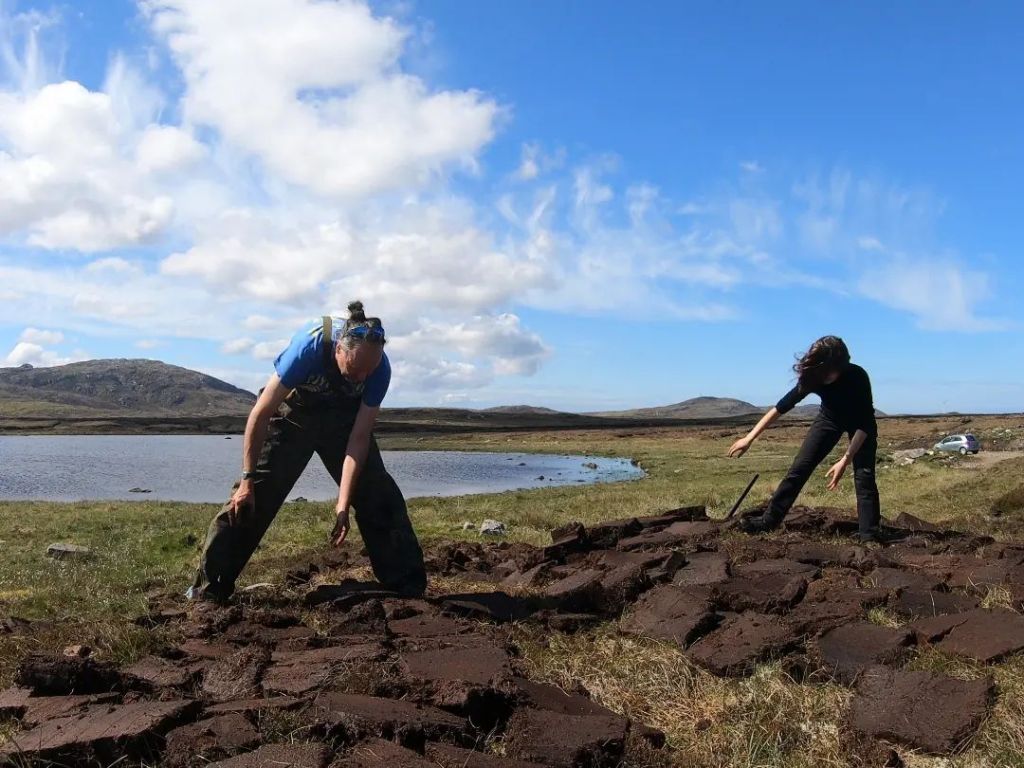
Ana moving with peat in the Outer Hebrides. Credit: Ana Norrie-Toch
Now, bikepacking has been the catalyst for discovering movement stories across the Highlands and Islands of Scotland, and the way that people and communities move – their physical connections to their landscape. For myself, as a Movement Artist, I take time to move within the landscapes I explore as on my solo adventures. These moments are found through the influence of that day’s journey. I feel very lucky that this fusion of my Movement Direction, bikepacking and personal movement practice have combined to complement each other through the exploration of community, landscape, storytelling, heritage, character and self.
TGO: How do you express your desire and the importance of preserving the ecology and human stories of your environment through your work as a movement artist?
Ana: The community of the Isle of Lewis have a deep connection and physical relationship to their landscape. I see this as Movement Heritage: physical movement and muscle memory passed down through generations.
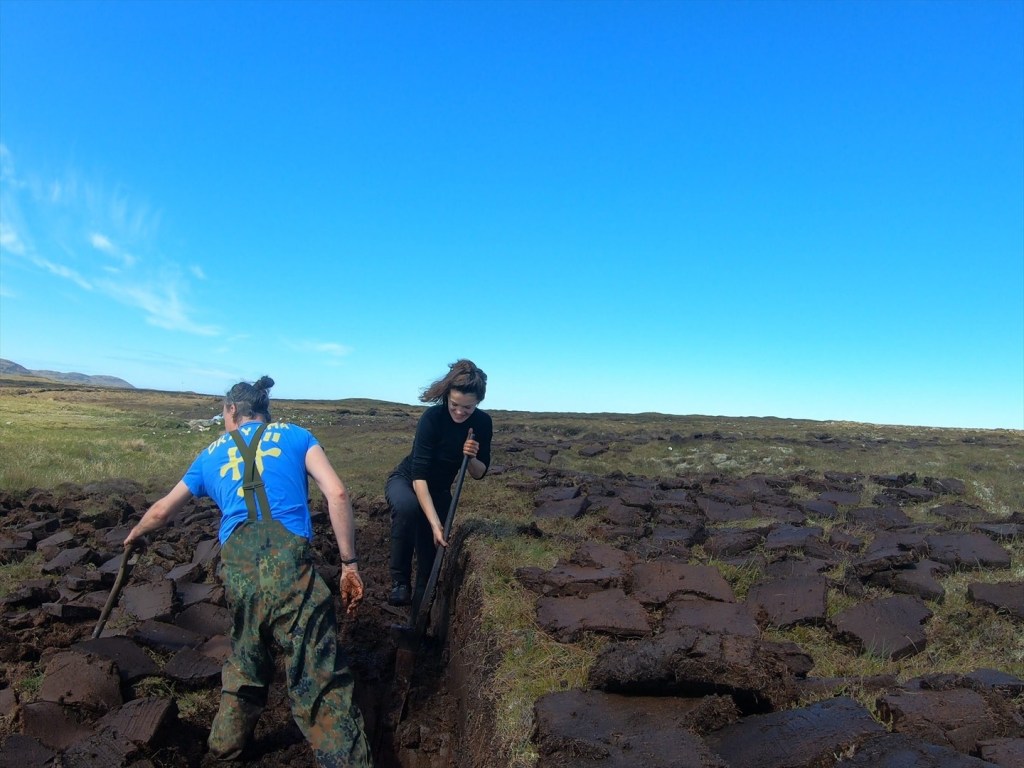
Peat restoration. Credit: Ana Norrie-Toch
This includes the artistry and skill of Peat Cutting on the Isle of Lewis and at sea with the creelers on the West coast. I am drawn to continue exploring the physical connections to landscape across Scotland, through genuine community collaboration, in an effort to preserve their past and present artistry, heritage and share a wider understanding of landscape.
Coming back to body language as a universal language, I believe that the way we can share stories of landscape and people, from a different perspective, has the potential to inspire curiosity in relationships to environment and ecology.
TGO: Why is wild camping so key to your creative practice within the landscape, and to you personally?
Ana: To get to the place where I am present – where my mind and body are truly connected – takes time. Believe me, I have tried to cycle into the woods for 10 minutes and just try to move creatively. This felt so fake and jarring. The momentum of bikepacking unravels all the stuff I just don’t need with me out there. And I like to stay out there – instead of a day ride and return – immersing myself in the landscape without rush.
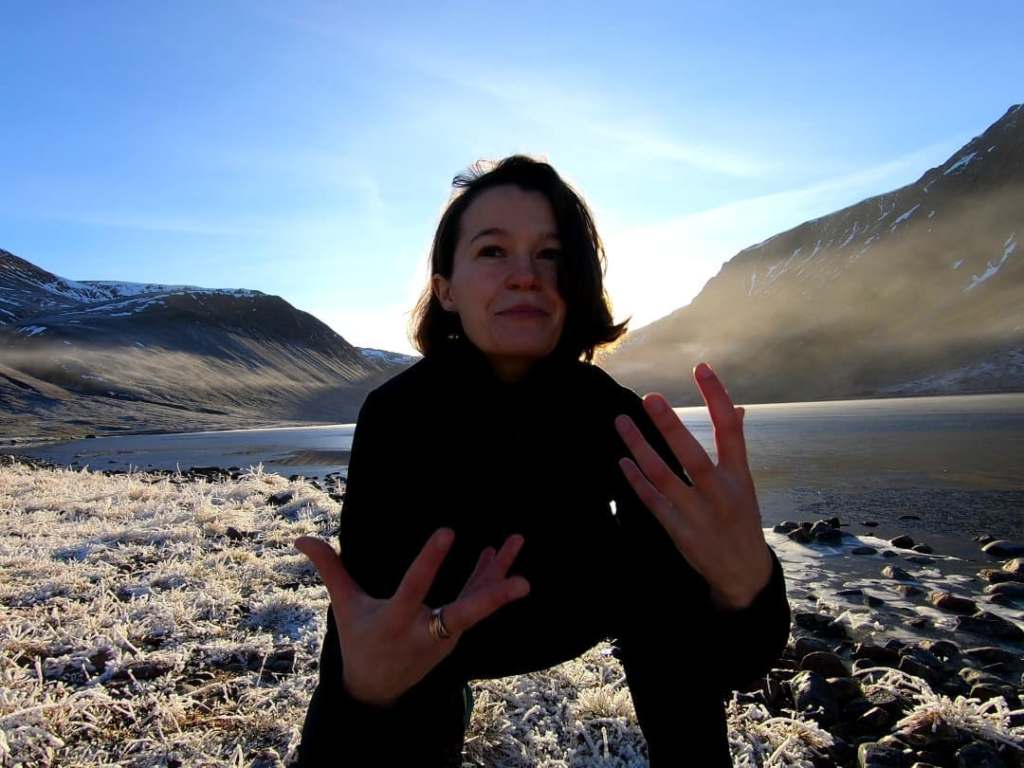
Post-camp at Loch Einich. Credit: Ana Norrie-Toch
Rest is also part of that process. To rest, while in that place of flow with the sounds of the wildlife, trees and the elements, keeps me present. This allows me to reach that quiet in my mind to just move how I want to move. Wild camping, or even just out on my mat with a sleeping bag is empowering, building a confidence that goes beyond being on the bike.
TGO: You’ve said that adventure is inherently creative. Can you elaborate on what you mean by that?
Ana: By chance, I met Greg Joliffe (a trail builder) and the filmmaker Liam Moss in a bar in Tomintoul when I was out on a solo bikepacking adventure. Greg had designed and was building a new trail, with Liam documenting, along the road at Glenlivet. We got talking about my adventure and I think the word “landscape” was used 100 times. Then greg brought up movement. Needless to say our conversation went on for hours as we discussed all things landscape and movement from each of our perspectives. The next day I walked along Greg’s trail. The shapes, flow, and interpretation of that space was art; the thought given to movement through landscape, and how this transferred to the body on bike was mind-blowingly creative.
I’m a real believer that adventuring by bike opens the world up to you – conversations, sharing of stories and passions – leading to a community of people who love the outdoors. When you look at the incredible variety of ways we engage with landscapes, each with their own momentum, there is so much rhythm, coordination, balance, weight transfer and breath – a natural and learned choreography within the body, adapting and interpreting the environment and landscape.

The landscape Ana loves. Credit: Ana Norrie-Toch
TGO: You seem to have a deep connection with the Highlands and Islands’ equine characters! How did this love of horses develop?
Ana: I rode a bit when I was younger, but now I feel happiest to just be around horses, particularly on Eriskay, where the ponies are very much a part of that island and community. When the wind changes, and you see that wildness and playfulness of these ponies, cantering down the hills and through the houses, it awakens something in the soul! To then have one of them rest their head on your shoulder is pretty special.
To feel the trust and calm of a horse, as they lean against you or nuzzle in, is honestly one of the best feelings in the world, particularly when out in these vast landscapes. I feel very calm with horses. Like the humbling vastness of our landscapes, the presence of horses and their size keeps you present and aware. I am by no means an equine expert – but it’s said they mirror you. Maybe it’s a reflection of my own calm through being out there, that I have met these lovely characters.
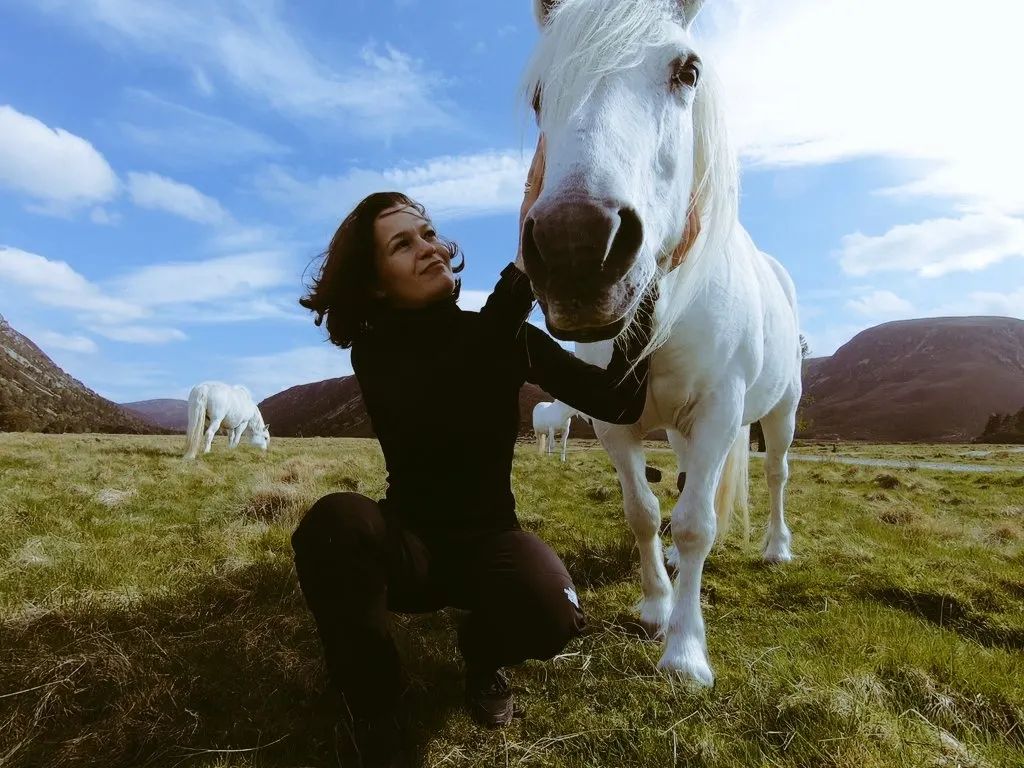
Ana and friend in Highland places. Credit: Ana Norrie-Toch
One experience stands out: bivvying one night in the Highlands when three white Highlands ponies stood around me all night as I slept in the middle of this vast landscape under a solitary tree. I woke up multiple times under the violet sky with a full moon – and their shapes stood still around me. Heaven. To journey side by side with a horse through the highlands of Scotland is something I’d love to do soon – so here’s hoping for the future. It is worth noting I do not feed any of the horses or animals I meet.
TGO: Can you tell me a little about your current projects, your film, My Wilderness, and about any upcoming projects we can look out for?
My Wilderness was commissioned by Wilderness Scotland and created with the fantastic film maker Rupert Shanks. This was the first time I’d shared my personal and creative connection to landscape. It was initially terrifying to put this film out but sharing the ways in which we engage with landscape is so important to show there is no limit to how you connect to these spaces creatively, physically and mentally. It’s so exciting to see the diversity out there, and the more we share these stories and experiences, the more potential there is to encourage someone to embrace their unique way of connecting too.
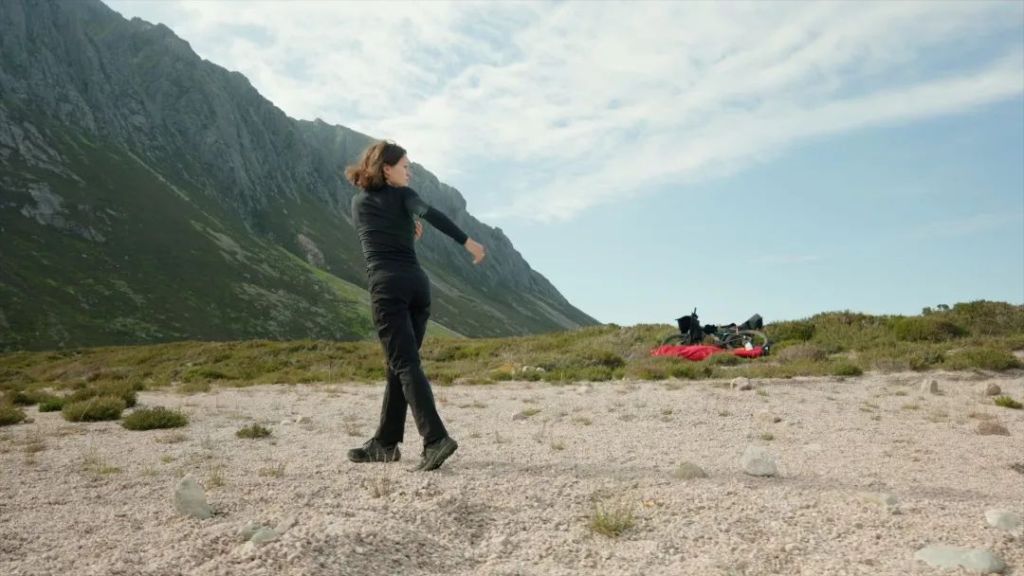
Ana in a still from the film, My Wilderness. Credit: Rupert Shanks
On the cycling side of things, Adventures with Ana is now up and running, where I guide bikepacking journeys across Scotland’s Highlands and Islands with 1-1 or small groups, with longer form movement-based bikepacking guiding starting in 2025! It feels like a very natural progression to share my energy and support through guiding, having personally experienced that transformational experience. I am forever inspired by the people who come out on these journeys. In collaboration with Alpkit and their School of Adventure and Wellbeing, I’m running a series of sessions called Introduction to Bikepacking. I’m really looking forward to hopefully breaking down some barriers for people to get out there and find their way of bikepacking.
Creatively, I’ll be developing my Movement Heritage residency with the community on the Isle of Lewis, creating an archival film, from a movement perspective of their physical connection to their landscape – made with the community for the community. We all have our unique way of engaging with our landscapes, and I am always enthusiastic to hear people’s stories and connections to landscape.
Get in touch with Ana via her website – movementbyana.com – or on Instagram @movementbyana_.

